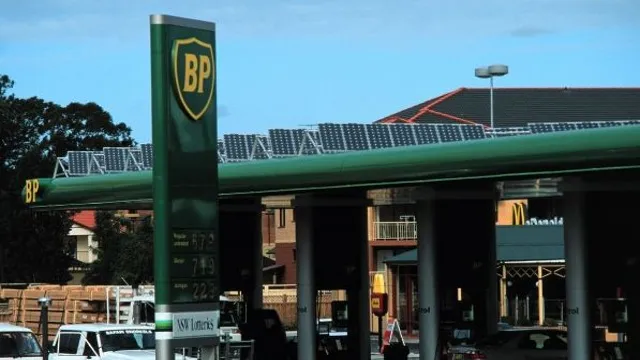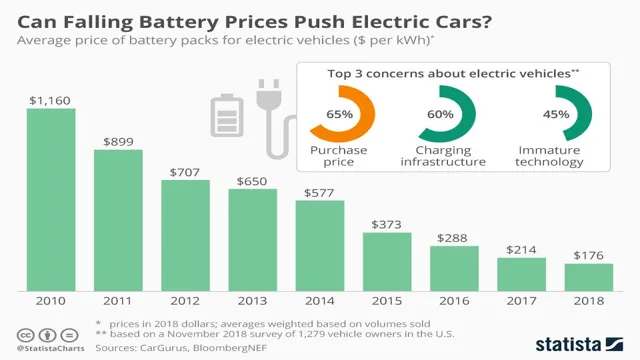Revolutionizing Electric Mobility: The Convenience and Efficiency of Electric Car Battery Swap Stations
Electric cars are rising in popularity, and it is not hard to see why. Not only are they environmentally friendly, but they also offer a cost-effective alternative to traditional fuel vehicles. However, one major hurdle that electric car drivers face is the range anxiety caused by the need to recharge their cars frequently.
This is where electric car battery swap stations come in, revolutionizing the way we charge our electric vehicles. Electric car battery swap stations offer a convenient, fast, and seamless way of recharging electric cars. With this new technology, drivers no longer have to worry about waiting for hours to charge their battery.
Instead, they can simply swap their depleted battery for a fully charged one and be on their way in less than ten minutes. This innovation is expected to change the game for electric cars, making them more practical for those who travel long distances and eliminating the need to plan routes around charging stations. It will also save drivers time, as they will not have to wait for recharging and can continue their journey without any interruptions.
In conclusion, electric car battery swap stations have the potential to revolutionize the way we charge our electric cars. With this technology, we can expect more convenient and efficient charging, making electric cars an even more appealing option for drivers. As we move towards a more sustainable future, innovations like this will make the transition to electric vehicles easier and more accessible for everyone.
The Concept
Electric car battery swap stations are an emerging concept in the world of sustainable transportation. Imagine being able to swap out your depleted battery for a fully charged one at a designated station in mere minutes, rather than waiting hours for a charge. This is the convenience that battery swap stations could offer electric vehicle owners.
The idea is that EV drivers would sign up for a subscription service, paying a fee to use the stations as often as needed. Companies like Tesla and Nio have already piloted battery swap stations in China, and there is potential for this concept to spread globally. However, there are still logistical and financial hurdles to overcome, such as standardizing battery designs and establishing sufficient stations to serve the needs of EV drivers.
Nonetheless, with the growing demand for sustainable transportation, battery swap stations could become a game-changing solution for the challenges of EV charging.
How Battery Swap Stations Work
Battery Swap Stations are an innovative solution to tackle the inconvenience and range anxiety associated with electric vehicles. The concept is simple: instead of waiting for hours to recharge your EV, you can swap out your depleted battery at a charging station and be back on the road in just a few minutes. The way it works is pretty straightforward: you drive up to the battery swap station, and a robotic arm quickly removes your EV’s depleted battery and replaces it with a fresh, fully charged one.
The station’s software verifies the battery’s condition and ensures that it’s compatible with your vehicle before the swap takes place. This process is fast, efficient, and eliminates the need to wait for your car’s battery to charge. With Battery Swap Stations, EV drivers can enjoy the convenience of traditional gas stations without the emissions or noise pollution.

Reducing Charging Time and Battery Degradation
As the world moves towards a more sustainable future, electric vehicles (EVs) have become increasingly popular. However, one of the biggest concerns with EVs is their charging time and battery degradation. Nobody wants to spend hours charging their car, and the degradation of the battery over time can be a major issue.
That’s where the concept of reducing charging time and battery degradation comes in. By improving the technology used to charge EVs, we can significantly reduce the time it takes to charge the battery. Additionally, by developing batteries that are more durable and less prone to degradation, we can extend the lifespan of EVs and reduce the need for costly replacements.
These innovations will be crucial in making EVs a more practical and affordable option for consumers, and will play a vital role in our transition towards a cleaner, more sustainable future.
Current Battery Swap Station Providers
Electric car battery swap stations have become an increasingly popular way for EV drivers to quickly and easily recharge their vehicles. There are currently a handful of providers offering this service, including Tesla, Nio, and Kandi. Tesla has been a pioneer in battery swap technology, with their first pilot station opening in 201
Today, they have a limited number of stations available for use in California, but plans to expand to other areas in the future. Chinese EV manufacturer Nio has also been making waves in the battery swap space, with their “Power Swap” stations allowing for a full battery exchange in just three minutes. They currently have over 130 Power Swap stations in operation throughout China.
Kandi, another Chinese company, has recently launched their “Kandi Station” which allows for battery swaps and high-speed charging. While these providers are still relatively limited in number, the convenience and efficiency of battery swap stations suggest they will only continue to gain popularity in the EV world.
Tesla’s Battery Swap Program
Tesla has always been at the forefront of innovation in the automotive industry, and their battery swap program is no exception. While the program was once available to customers, it was later discontinued due to a lack of demand. However, current providers of battery swap stations like NIO and Ample have stepped in to fill the gap left by Tesla.
These companies offer battery swapping to their customers as a convenient and fast alternative to waiting for their electric vehicle to charge. NIO, for example, offers a battery swap in under three minutes, a process that is quicker than waiting for an EV to recharge. With the improvements in battery swapping technology and the increasing popularity of electric vehicles, it will be interesting to see if Tesla decides to re-enter the battery swap market and compete with these new providers.
Better Place: Pioneer of Battery Swap Stations
Today, there are several providers of battery swap stations that have emerged as a result of the innovation pioneered by Better Place. These providers offer a convenient and efficient way of replenishing electric vehicle (EV) batteries. Some of the prominent players in this market include Tesla, NIO, and Gogoro, each with its unique approach and technology.
Tesla, for instance, has its own proprietary charging technology, while NIO offers its EV owners the option of battery rental. Gogoro, on the other hand, operates in dense urban areas and provides a network of battery swap stations where customers can quickly and easily swap out depleted batteries for fully charged ones. All of these companies are driving forward the development of EVs and the infrastructure they require to become a viable alternative to traditional vehicles, making it easier and more convenient for drivers to embrace clean energy.
Future Plans for Battery Swap Station Expansion
As more and more electric vehicles hit the road, the demand for battery swap stations is also increasing. Currently, there are a few major providers of battery swap stations, including Tesla and Nio. Tesla has been expanding its Supercharger network for years, but its battery swap stations are still limited.
Nio, on the other hand, has been aggressively expanding its battery swap station network throughout China, offering customers the option to quickly swap out their EV’s battery instead of waiting for it to charge. As more providers enter the market, it’s likely that we will see a surge in battery swap station expansion. This will allow EV drivers to travel longer distances without worrying about charging times, making electric vehicles much more practical for everyday use.
With the right infrastructure in place, we may soon see the widespread adoption of electric vehicles, revolutionizing the way we commute and travel.
Benefits and Drawbacks
Electric car battery swap stations have both benefits and drawbacks. One of the main benefits is that it can drastically reduce the amount of time it takes to charge an electric car. Instead of waiting for hours for the car to charge, you can simply swap out the depleted battery with a fully charged one, and be on your way in a matter of minutes.
However, the drawback is that it requires infrastructure and investment to establish a network of swap stations. Furthermore, the standardization of battery sizes and types is also an important issue that must be addressed. Another potential issue is the lack of convenience for those who want to own their own batteries instead of swapping them out.
Overall, battery swap stations have the potential to revolutionize the electric car industry, but it will take time and investment to make them a viable option for all electric car owners.
Pros of Battery Swap Stations
Battery swap stations have gained popularity in recent years as an alternative charging solution for electric vehicles. One of the main benefits of battery swap stations is convenience, allowing drivers to quickly swap out their depleted battery with a fully charged one without waiting for their vehicle to charge up. Another advantage is the potential cost savings for consumers, who may be able to pay less for a battery swap than for other charging methods.
Additionally, battery swap stations can help reduce range anxiety by providing a reliable and accessible charging option on long trips. However, there are also some drawbacks to consider, including the high initial cost to install and maintain these stations, as well as the limited availability of battery swap stations. Overall, the benefits of battery swap stations are significant, but their practicality ultimately depends on the individual needs of EV owners and the infrastructure supporting their use.
Cons of Battery Swap Stations
Battery swap stations have been touted as a promising solution to the time-consuming charging process of electric vehicles. While they offer several benefits, they also have some drawbacks. One of the main cons of battery swap stations is that they require a significant investment in infrastructure.
Implementing a widespread network of swap stations requires a massive capital expenditure, which can be a major deterrent. Additionally, swapping batteries is not as simple as it may seem. Different car manufacturers use different battery designs, which makes standardization difficult.
This means that swap stations would need to be specially equipped to accommodate multiple battery types, further adding to the cost. Another issue is that the battery swap process itself can be time-consuming and cumbersome. It requires specialized equipment and personnel, which can cause delays and make the process less efficient.
Overall, while battery swap stations provide faster charging times and convenience, their high cost and operational challenges make them less feasible than other charging solutions.
The Future of Battery Swapping Technology
Electric car battery swap stations are an incredibly exciting development in the world of electric vehicles. These stations allow drivers to quickly and easily swap out their depleted battery for a fully charged one, without the lengthy wait times associated with traditional charging methods. This technology is already in use in some parts of the world, with companies such as Tesla and Nio leading the way.
However, there are challenges to overcome before battery swap stations become widely available. These include concerns around the cost of the battery swap stations themselves, as well as the logistical challenges of keeping batteries fully charged and ready for use. Additionally, there is some debate about the long-term sustainability of battery swap stations, as some experts believe that advancements in battery technology will soon make them obsolete.
Nonetheless, the development of electric car battery swap stations is a promising step towards enabling more sustainable transportation systems, and we look forward to seeing how this technology evolves in the years to come.
Conclusion
In conclusion, battery swap stations for electric cars represent a promising solution for the challenges of charging infrastructure and range anxiety. These stations provide the option of quickly exchanging a depleted battery for a fully charged one, making electric vehicles as convenient and easy to use as traditional gasoline-powered cars. With the technology becoming increasingly advanced, battery swap stations may well become the future of electric vehicle charging.
So go ahead, swap your battery and drive off into the sunset – the power is in your hands (literally)!
FAQs
What is an electric car battery swap station?
An electric car battery swap station is a facility where electric vehicle owners can quickly swap out their batteries for a fully charged one within a few minutes instead of waiting hours for their car to charge.
How does an electric car battery swap station work?
An electric car battery swap station works by removing the empty battery pack from the car and replacing it with a fully charged one. The vehicle owner pays for the battery swap, and the station recharges the swapped battery for the next use.
Are there any advantages of using an electric car battery swap station over traditional charging methods?
Yes, electric car battery swap stations provide several advantages over traditional charging methods. The battery swap only takes a few minutes, which saves time and eliminates the need to find and wait at a charging station. Additionally, it can extend the lifespan of the car’s battery by reducing the number of charging cycles, which can save money in the long run.
Are there any downsides to using an electric car battery swap station?
One disadvantage of using an electric car battery swap station is that not all electric vehicles are compatible with battery swapping technology, so it may not be a feasible option for all drivers. Additionally, the initial cost of building and maintaining battery swap stations can be expensive.




